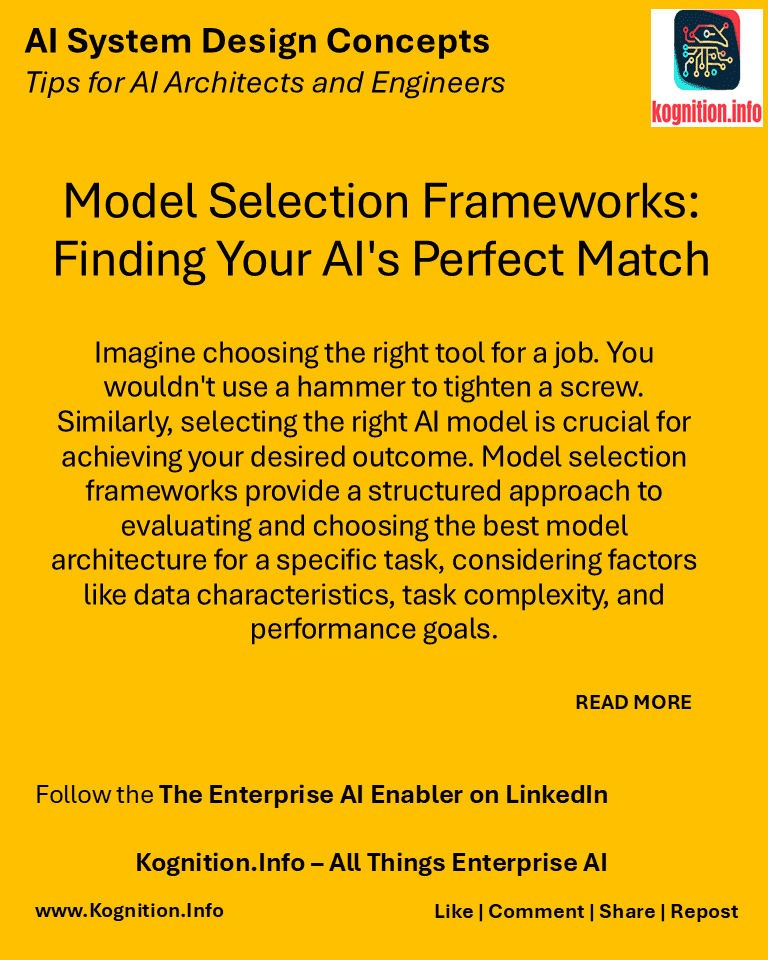
Imagine choosing the right tool for a job. You wouldn’t use a hammer to tighten a screw. Similarly, selecting the right AI model is crucial for achieving your desired outcome. Model selection frameworks provide a structured approach to evaluating and choosing the best model architecture for a specific task, considering factors like data characteristics, task complexity, and performance goals.
Use cases:
- Image classification: Choosing between Convolutional Neural Networks (CNNs) like ResNet or EfficientNet based on accuracy and computational cost.
- Natural language processing: Selecting from Recurrent Neural Networks (RNNs), Transformers, or simpler models like Naive Bayes for text classification or sentiment analysis.
- Time series forecasting: Evaluating ARIMA, Prophet, or RNN variants for predicting future trends based on historical data.
How?
- Understand the task: Clearly define the problem and the desired outcome.
- Analyze the data: Identify data characteristics like size, dimensionality, and type.
- Consider model properties: Evaluate different model architectures based on their strengths and weaknesses, complexity, and interpretability.
- Experiment and compare: Train and evaluate multiple models on a subset of the data using appropriate metrics (accuracy, precision, recall, F1-score).
- Select the best model: Choose the model that best balances performance, complexity, and resource requirements.
Benefits:
- Improved performance: Selecting the right model can significantly improve accuracy and efficiency.
- Reduced development time: Avoids wasting time on unsuitable models.
- Better resource utilization: Chooses models that align with available computational resources.
Potential pitfalls:
- Bias towards familiar models: Be open to exploring new and less familiar architectures.
- Overfitting to the validation set: Use techniques like cross-validation to avoid overfitting and ensure generalization.
- Ignoring model interpretability: Consider the importance of understanding how the model makes decisions, especially in sensitive applications.
